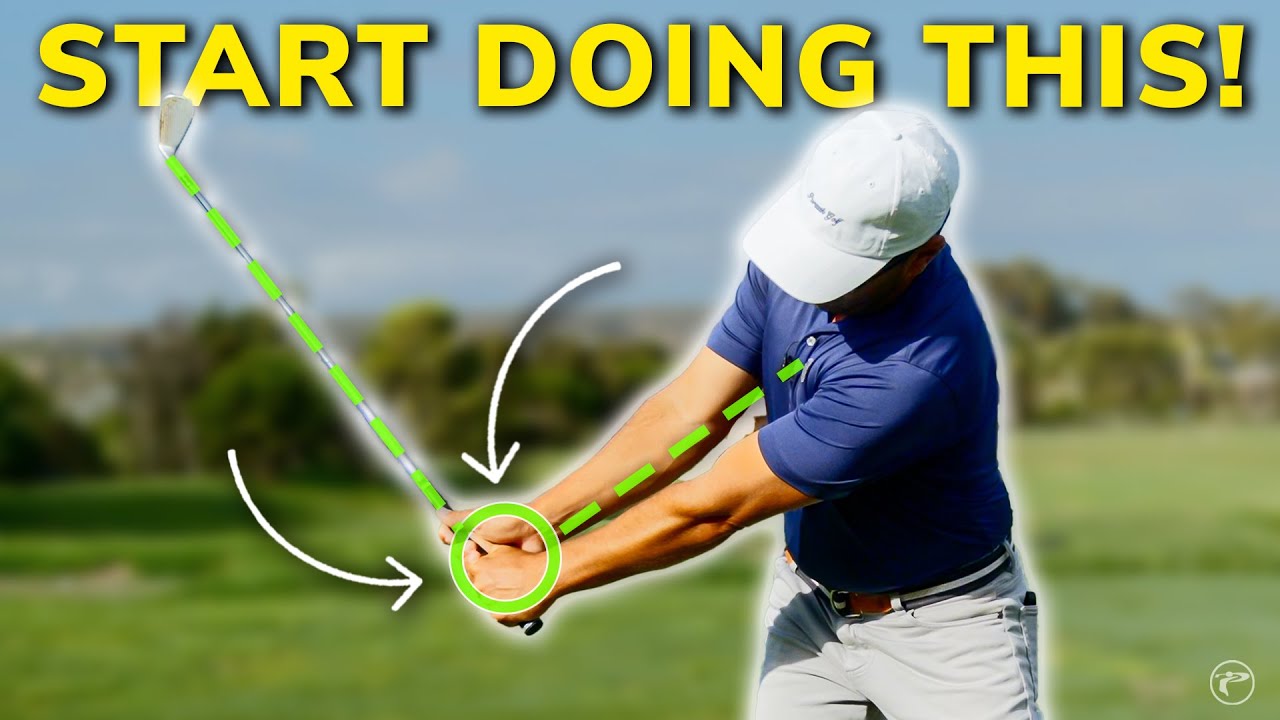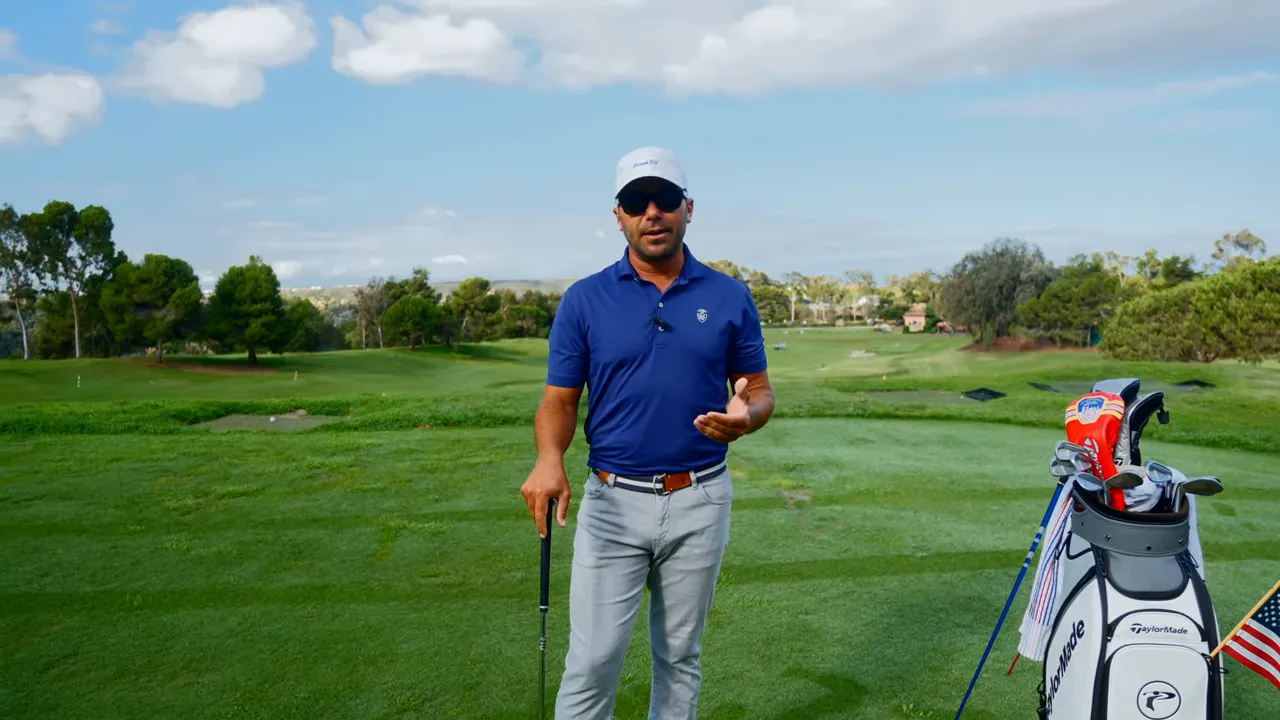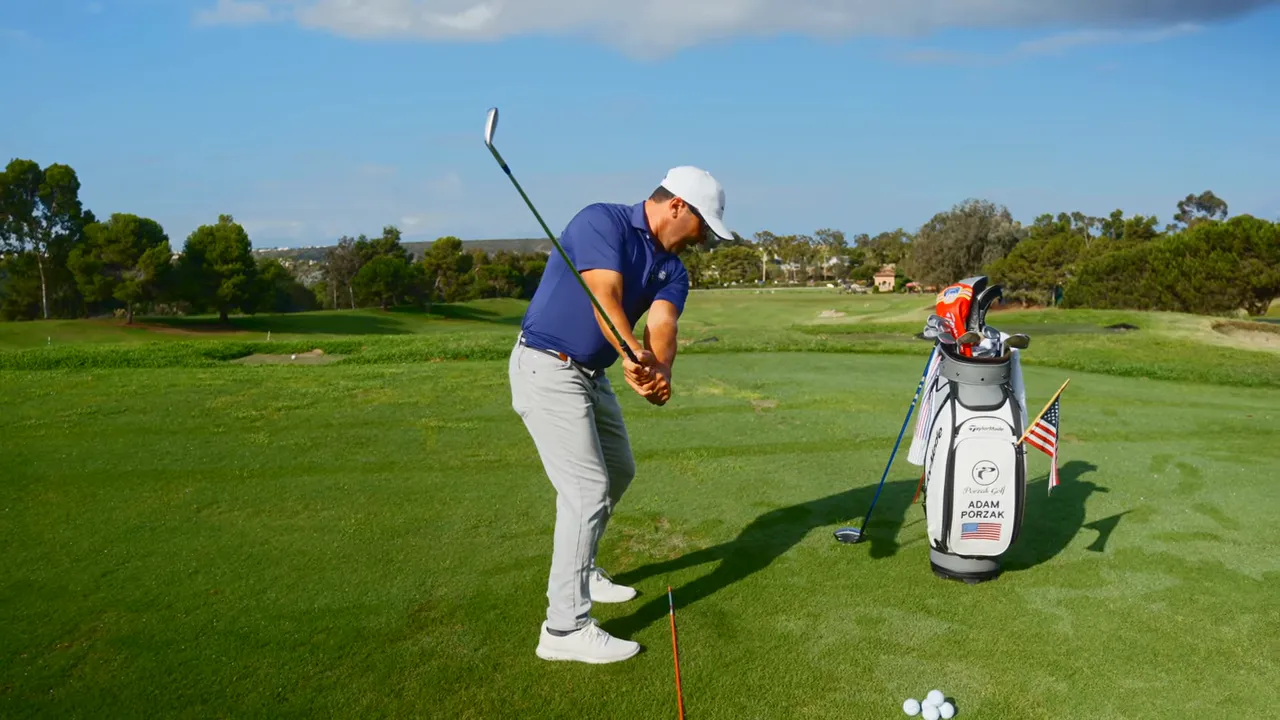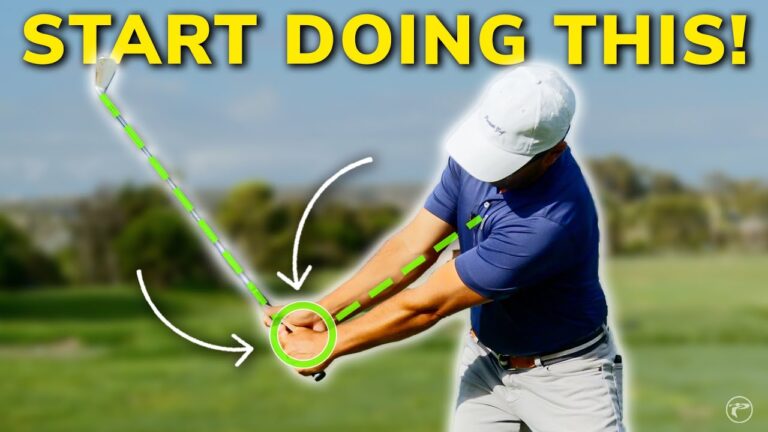
Are you struggling with a consistent golf swing? You’re not alone. The takeaway is crucial for setting up a powerful and repeatable swing. Master the technique and your entire game improves—wrong it, and you’ll consistently fight inconsistency and poor ball striking. This guide will show you how to achieve a repeatable, powerful golf takeaway, addressing common pitfalls and offering practical solutions.

Step 1: Understand the Golf Takeaway Analogy – Push a Beach Ball Below the Water
Think of a beach ball at waist height. As you start your backswing, gently push it down and away to keep it submerged. This visualization helps you:
- Maintain Low Hands: Start with hands low to your body.
- Push Away from the Ball Line: Maintain width between your hands and torso.
- Avoid Lifting Hands: Prevent elevating the handle alongside your body.
“Push the beach ball below the water level.”
This helps avoid the common error of high hands and a low clubhead which reduces leverage.
Step 2: Keep Your Hands Low – Stop Elevating the Handle
Many golfers mistakenly lift their hands too soon in the takeaway, causing the club to lag low. Instead, focus on:
- Maintaining good posture with a slight tilt at the shoulders.
- Keeping your spine angle steady, imagining your chin is on a “glass tabletop”.
- Pushing your hands out and slightly downward on the handle.
Correct hand placement ensures proper wrist hinge and leverage.
Step 3: Create Leverage with Wrist Hinge – The ‘L’ That Matters
Proper hinge is crucial for power. Form an “L” with your lead arm and club to store energy:
- Keep hands low and away, using the beach ball feel.
- Apply slight downward pressure to tighten the lead arm’s angle with the club.
- Position the clubhead above the trail forearm, aiming the butt towards the ball.
A correct hinge results in a classic set position, placing the club in front rather than behind the body.
Step 4: Preserve Width and Connection
A great takeaway maintains:
- Width: Horizontal distance between your body center and hands.
- Connection: Synchronization between your arms and torso movement.
Pushing the beach ball visually helps preserve these elements, supporting a consistent swing plane.
Step 5: Use a Simple Checkpoint – Hands Underneath, Clubhead Above the Trail Shoulder
A practical drill involves a partner holding a club at belt level out front. Aim to:
- Keep hands beneath this checkpoint club (at pocket level).
- Position the clubhead above your trail shoulder.

Step 6: Kickstart a 45-Degree Hinge and Set the Club for the Swing Plane
Starting with a 45-degree hinge aligns the shaft with your body’s turn, promoting a natural swing arc. Enhance technique by:
- Starting takeaway with hands low and applying slightly downward pressure.
- Ensuring the shaft rises at about 45 degrees relative to your stance.
Step 7: Decide on Angle of Attack – Ball First, Divot Later
The proper setup promotes a downward attack angle:
- Maintain solid spine angle and chin position.
- Let torso rotation control the downswing.
- Use created leverage to release club through impact.
Step 8: Drills and Practice Routine for a Reliable Golf Takeaway
Drill 1 — Beach Ball Push (Feel Drill)
- Address with proper posture, visualizing the beach ball at the belt line.
- Push down and away while rotating shoulders, keeping chin steady.
Drill 2 — Belt Club Check (Coach/Partner Drill)
- With a held club at belt level, focus on keeping hands beneath it, clubhead over shoulder.
Drill 3 — Towel Under Arms (Connection Drill)
- Use a towel to maintain arm-body connection during slow swings.
Step 9: Common Mistakes and How to Fix Them
Problem: Hands Rise and Clubhead Lags
Fix: Visualize the beach ball, apply downward handle pressure, maintain arm-body connection.
Problem: Early Lifting of Chest
Fix: Use chin “glass tabletop” trick, focus on stable shoulder rotation.
Problem: Club Behind You at the Top
Fix: Reinforce hinge, use belt-club drill for checks.
Problem: Over-the-Top Downswing
Fix: Rotate the body as the axis, not hands manipulation.
Step 10: A Practice Plan to Reinforce Your Takeaway
Weekly practice should include:
- Stretching and Practice Swings (5 mins)
- Feel Work (10–15 mins): Beach Ball Push drill.
- Checkpoint Work (10 mins): Belt club check.
- Connection Work (5–10 mins): Towel rhythm swings.
- Targeted Ball Striking (10–15 mins): Focus on takeaway during swings.
FAQs — Golf Takeaway Questions Answered
Q: Why is the takeaway important?
A: It sets the foundation for the entire swing, affecting leverage and connection.
Q: What does proper takeaway feel like?
A: Hands should move outward and downward, pushing the “beach ball” with control.
Q: How much wrist hinge is needed?
A: Aim for a 45-degree angle between lead arm and club.
Q: Will this impact my long game?
A: Yes, maintaining fundamentals helps across all clubs.
Q: How long to change the takeaway?
A: Regular practice will show improvements in weeks, with lasting change over months.
Conclusion — Keep It Simple and Feel the Push
The key to a reliable golf swing starts with mastering the takeaway. Use these drills and insights to ensure a solid setup and enhance your overall game. Practice regularly and remember: hands low, push the beach ball below, hinge into ‘L’, and maintain width. Let these basics become natural, transforming your performance on the course.


0 Comments